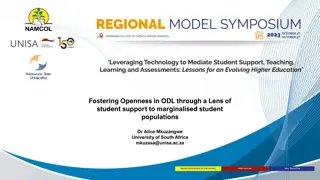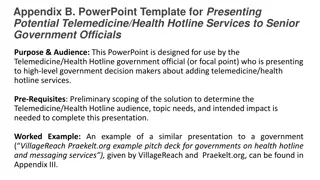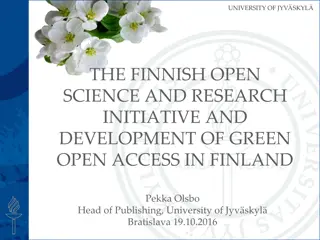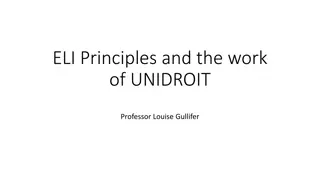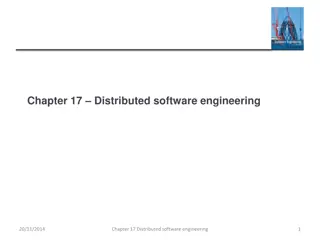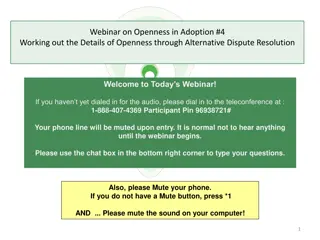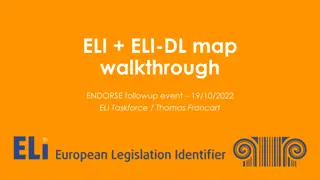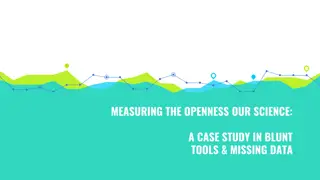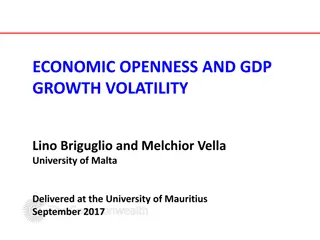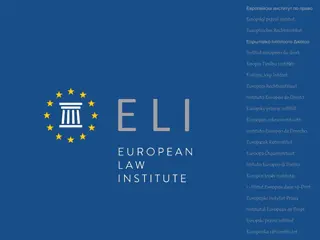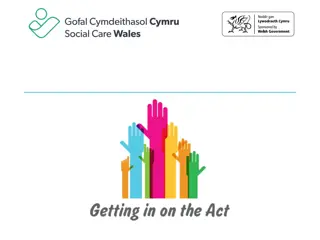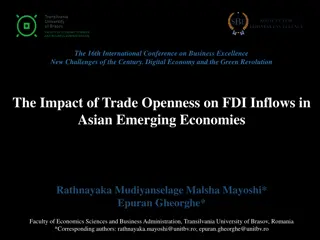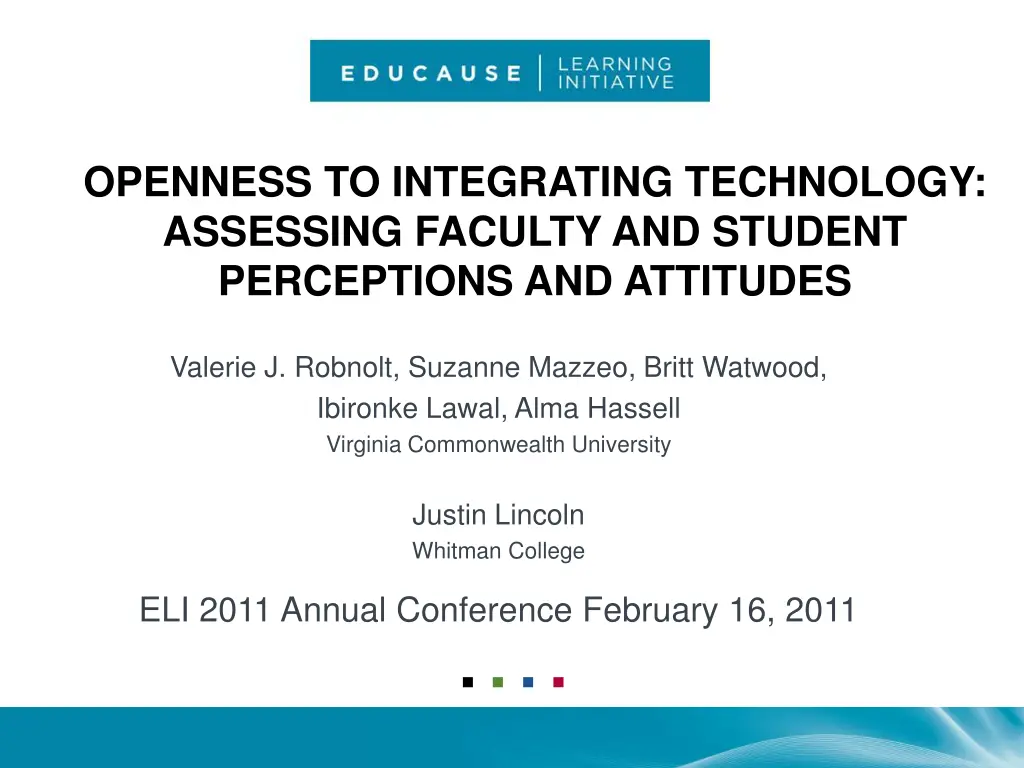
Integrating Technology: Faculty and Student Perceptions
Explore faculty and student perceptions on digital media use, expectations, and the importance of digital skills in 21st-century literacy. Discover key findings on text messaging habits among students.
Download Presentation

Please find below an Image/Link to download the presentation.
The content on the website is provided AS IS for your information and personal use only. It may not be sold, licensed, or shared on other websites without obtaining consent from the author. If you encounter any issues during the download, it is possible that the publisher has removed the file from their server.
You are allowed to download the files provided on this website for personal or commercial use, subject to the condition that they are used lawfully. All files are the property of their respective owners.
The content on the website is provided AS IS for your information and personal use only. It may not be sold, licensed, or shared on other websites without obtaining consent from the author.
E N D
Presentation Transcript
OPENNESS TO INTEGRATING TECHNOLOGY: ASSESSING FACULTY AND STUDENT PERCEPTIONS AND ATTITUDES Valerie J. Robnolt, Suzanne Mazzeo, Britt Watwood, Ibironke Lawal, Alma Hassell Virginia Commonwealth University Justin Lincoln Whitman College ELI 2011 Annual Conference February 16, 2011
INTRODUCTION The current research investigates faculty and students perceptions of and openness to the skills necessary for literacy and learning in the 21st century. Content Digital Social Skills Media
REVIEW OF THE LITERATURE Several authors have described a digital disconnect between faculty and students at the undergraduate level (Levin & Arafeh, 2002; Reardon et al., under review). Previous work in this area has examined faculty and students use of digital media, and preferences regarding the integration of digital technology into undergraduate coursework (e.g., Reardon et al., under review).
METHODOLOGY - PARTICIPANTS Faculty from the College of Humanities and Sciences and School of Education (n=83) Arts and Humanities (n=25) Social Sciences (n=17) Natural Sciences (n=14) Education (n=10) Other (n=2) Not Answered (n=15) Students enrolled in PSYC 101 and EDUS/PSYC 301 (n=677)
PARTICIPANT RECRUITMENT Faculty were recruited via an invitation email and their survey was administered through Inquisite. Students were recruited from undergraduate Psychology and Education courses and completed the survey through SONA, an online survey program, as an extra-credit option.
RESEARCH QUESTIONS What are faculty and students use of digital media for personal and educational work? What are faculty and students expectations of digital media for educational use? What are faculty and students perceptions of the importance of various digital skills to 21st century literacy?
KEY FINDINGS When asked about text messaging, 52.1% of the students reported text messaging several times a day while only 15.1% of the faculty reported text messaging several times a day.
KEY FINDINGS 66.27% of the faculty reported never using instant messaging while 27.9% of the students never use it.
KEY FINDINGS Nearly one third (30.1%) of faculty thought students definitely expected them to use the Internet in class; however, 19.2% of the students reported that they definitely expected faculty to use it.
SOCIAL NETWORKING On the survey, 72.1% of students don t expect faculty to use social networking sites and 78.1% of faculty say their students don t expect them to use those sites. When students were asked an open-ended question about what technology they didn t want used in class, social networks, such as Facebook, were the most frequently cited answer. Faculty overwhelmingly shared that they didn t think students wanted them to use Facebook.
POWERPOINT STUDENTS FACULTY Think Students Expect Faculty to Use PPT Think Students May Expect Use of PPT Definitely Expect Faculty to Use PPT Expect Faculty May Use PPT In the open-ended response, only 3 students mentioned PowerPoint as a technology they don t want to see used; on the other hand, more faculty seem to think that students don t want PowerPoint used.
SEARCHING FOR INFORMATION ON WEB Students Faculty 0 20 40 60 80 100 120 Web Searches Extremely Important Skill Web Searches Very Important Skill Other When asked what are the most important skills to learning in today s environment, overwhelmingly faculty said that searching for information (e.g., Googling) was a necessary skill. One faculty said that students should, [Search] journal databases like Medline and NOT using Google as a substitute.
VALIDATING INFORMATION ON THE WEB Students Faculty 0 20 40 60 80 100 120 Validating Information Extremely Important Skill Validating Information Very Important Skill Other When asked what are the most important skills to learning in today s environment, faculty overwhelmingly said that validating authenticity of information on the Web was a necessary skill.
POINT OF DISCUSSION One faculty member said, They (the students) are driven by technology I m sure they would prefer me to make my lectures like a video game.
QUESTIONS RAISED BY RESEARCH What is the role of PowerPoint? Is there a role for social networking in instruction? Whose job is it to teach online searching strategies and how to validate authenticity of information on websites?
THANK YOU vjrobnolt@vcu.edu semazzeo@vcu.edu bwatwood@vcu.edu ahassell@vcu.edu ilawal@vcu.edu

